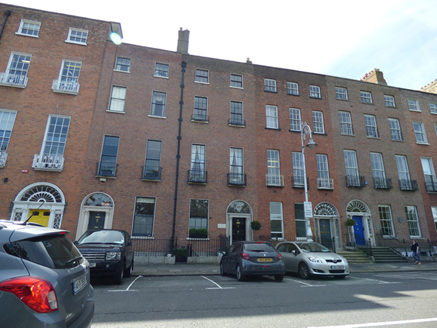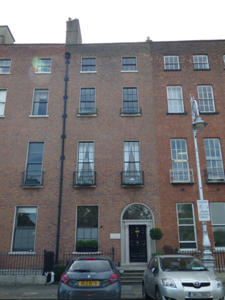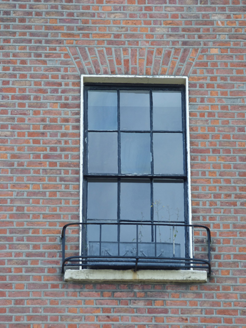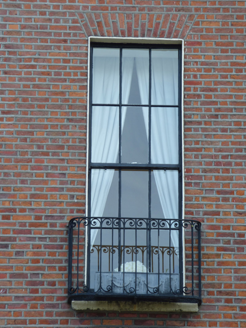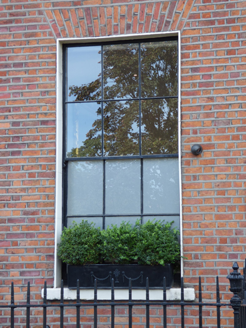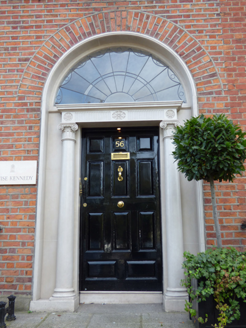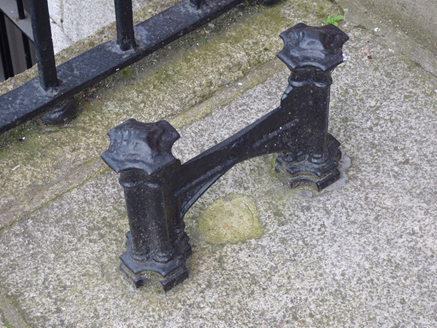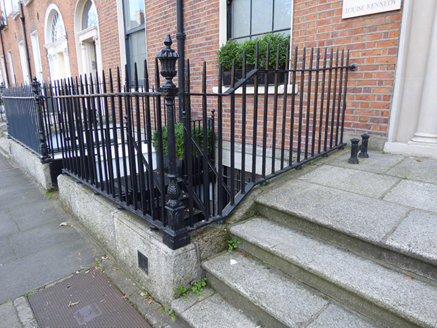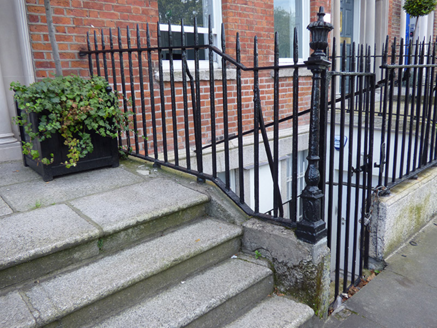Survey Data
Reg No
50100432
Rating
Regional
Categories of Special Interest
Architectural, Artistic
Original Use
House
In Use As
Office
Date
1775 - 1795
Coordinates
316722, 233410
Date Recorded
24/08/2016
Date Updated
--/--/--
Description
Attached two-bay four-storey former house over basement, built c. 1785 as one of pair with No. 55, having single-storey return to rear. Rear of building projects significantly from line of buildings to west and is slightly recessed from line of those to east. Now in use as offices. M-profile pitched slate roof with skylight to valley, set behind brick parapet with granite coping, and having rendered chimneystacks with clay pots to party walls, and cast-iron downpipe to east end of front elevation. Flemish bond red brick walling on granite plinth course to front elevation over painted smooth rendered walling to basement. Square-headed window openings, diminishing in height to upper floors, with painted rendered reveals and painted masonry sills; granite block-and-start surrounds to basement openings. Timber sliding sash windows, front elevation having three-over-three pane to top floor, eight-over-eight pane to basement and six-over-six pane elsewhere, some of latter having horns; and rear elevation having three-over-three pane to top floor and six-over-six pane elsewhere. Front elevation has wrought-iron guard-rails to second floor openings, decorative wrought-iron balconettes to first floor and replacement grilles to basement openings. Round-headed door opening with rendered linings, painted masonry doorcase, entablature with fluted frieze and moulded cornice, frieze having paterae, over engaged Adamesque Ionic columns, leaded batwing fanlight and eleven-panel timber door with brass furniture. Granite platform with cast-iron boot-scrapes and four bull's-nose granite steps. Wrought-iron railings enclosing basement area with decorative cast-iron posts on moulded granite plinth. Rear of plot has carparking, two-storey mid- to late twentieth-century building and concrete block boundary to lane with steel vehicular gate.
Appraisal
No. 56 Merrion Square was built as a pair with No. 55. It is a well-retained Georgian townhouse, displaying a typically well-balanced yet restrained façade, enlivened by its Adamesque Ionic doorcase and some fine ironwork features, which provide visual and craft interest. The building and its intact setting details contribute significantly to the intact appearance of this important architectural set-piece. Developed as part of the Fitzwilliam Estate, Merrion Square is one of the best-preserved Georgian streetscapes in Ireland. The north, east and south sides of the square are lined with terraced houses of eighteenth and early nineteenth-century date, while the west side is terminated by the garden front of Leinster House. The terraced houses maintain a relatively uniform building height and design, attributed to standards promoted in Fitzwilliam's leases. Individuality was introduced through the design of doorcases, window ironwork and interior decorative schemes. The south side of Merrion Square was initially set in large plots of twelve leases; plots were leased consecutively from east to west until the row was complete in 1791.
